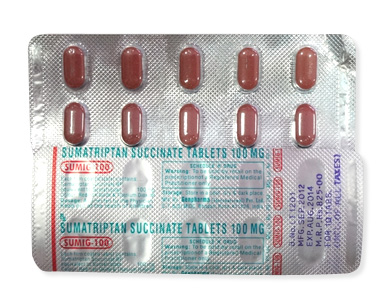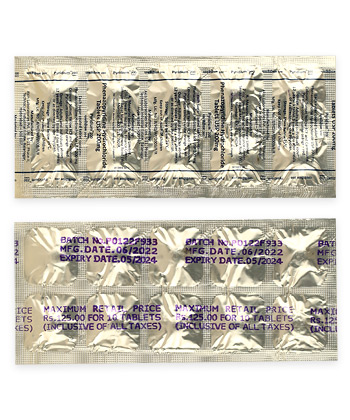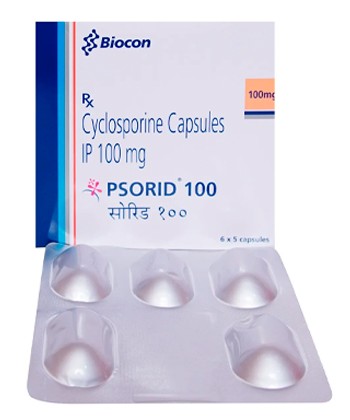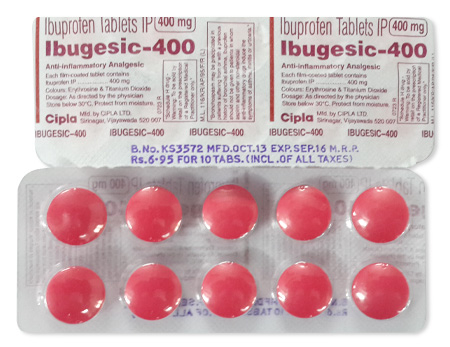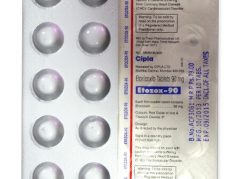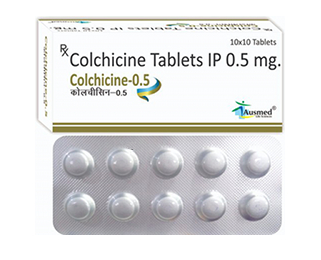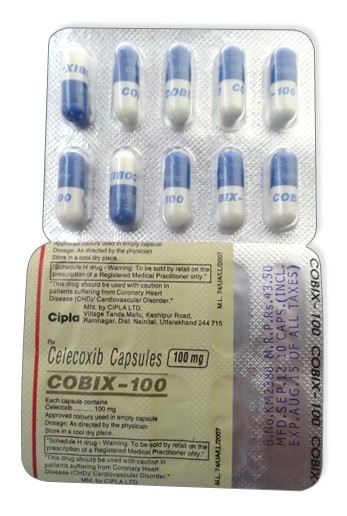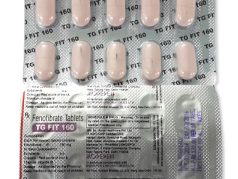Aleve
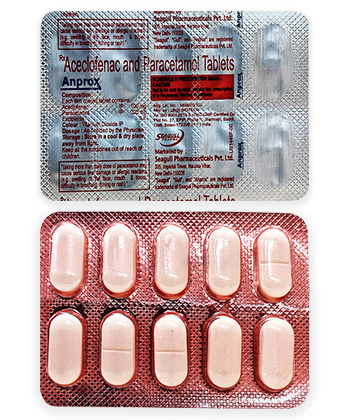
Aleve
- Aleve can be purchased at pharmacies without a prescription in Canada, with delivery options available.
- Aleve is used for the relief of pain, inflammation, and fever. It is a non-steroidal anti-inflammatory drug (NSAID) that works by inhibiting the production of prostaglandins, which cause inflammation and pain.
- The usual dose of Aleve for adults is 220 mg, taken every 8–12 hours as needed, with a maximum of 660 mg per day.
- The form of administration is a tablet.
- The effect of the medication begins within 30 minutes.
- The duration of action is approximately 8–12 hours.
- Do not consume alcohol while taking Aleve as it may increase the risk of gastrointestinal bleeding.
- The most common side effect is stomach upset.
- Would you like to try Aleve without a prescription?
Basic Aleve Information
- INN (International Nonproprietary Name): Naproxen sodium
- Brand names available in Canada: Aleve, Anaprox
- ATC Code: M01AE02
- Forms & dosages: Tablets, gel caps, suspension
- Manufacturers in Canada: Bayer, Teva, Apotex
- Registration status in Canada: Approved for OTC/Prescription
- OTC / Rx classification: OTC for lower doses, Rx for higher strengths
Availability & Price Landscape
Understanding the landscape of Aleve availability and pricing can significantly aid consumers in making informed choices about pain relief options. Major Canadian pharmacy chains like Shoppers Drug Mart, Rexall, and London Drugs widely stock Aleve.
These chains typically carry various formulations, including the popular 220 mg caplets. The usual price range for a bottle of Aleve caplets averages around CAD 10-15 for 30 caplets, making it reasonably affordable for consumers seeking effective relief.
Online Pharmacy Trends in Canada
In recent years, online pharmacy sales of Aleve have surged, especially post-pandemic. The convenience of shopping from home has attracted many consumers, although it’s important to consider provincial regulations that can affect online purchases.
For example, some provinces have specific rules regarding the sale of OTC medications online, requiring consumers to confirm their age or health conditions before purchasing. This regulatory landscape can impact your accessibility to Aleve online, so it's essential to check your provinical rules before making a purchase.
Price Ranges by Package Size
When comparing prices for Aleve across different provinces, it is crucial to note that prices can vary. Generally, a 100-count bottle of Aleve can range from CAD 20 to CAD 30 depending on the province and retailer. Many pharmacies also offer discounts and sales, especially for frequent shoppers or members of store loyalty programs.
For those seeking the best deal, it’s recommended to browse online pharmacy platforms and check local flyers regularly to catch those limited-time promotions.
Canadian Patient Insights & Satisfaction Levels
Feedback on Aleve from various online forums like Reddit Canada and HealthBoards reveals a mix of opinions. Users frequently note its effectiveness in managing pain, particularly for conditions like arthritis and muscle aches. The pain relief offered by Aleve compared to Ibuprofen (Advil) is often highlighted, especially in terms of duration of effect.
However, those discussions also shed light on potential challenges faced by users, including side effects such as stomach upset or headache. These insights can be particularly helpful for new users considering Aleve as an option.
Reported Benefits and Challenges from Canadian Patients
Aleves’s reported benefits often centre around its anti-inflammatory properties, making it a preferred choice for chronic pain. Users frequently cite quick onset of relief for headaches and menstrual cramps, solidifying Aleve’s reputation among those demographics.
While benefits abound, challenges also emerge. Feedback indicates side effects like gastrointestinal discomfort are common, particularly among higher-dose users. Understanding these factors can help tailor usage to individual needs, creating a more beneficial experience with Aleve.
Product Overview & Brand Variants
INN and Brand Names Used in Canada
The International Nonproprietary Name (INN) for Aleve is Naproxen sodium, which is widely recognized across various regions. In Canada, it is marketed under the brand name Aleve as well as Anaprox in prescription form. It comes in different dosages suitable for various treatment needs, available in both caplet and liquid forms.
Legal Classification Under Health Canada
Health Canada classifies Aleve primarily as an over-the-counter (OTC) medication for lower dosages (220 mg caplets). Higher strengths, such as Anaprox, fall under prescription status. This classification ensures proper use, encouraging consultation with healthcare providers when higher doses might be necessary.
Indications in Local Canadian Medical Practice
Approved Uses (Health Canada DIN Context)
Health Canada recognizes Aleve for several approved uses, primarily targeting pain relief associated with inflammation, arthritis, and menstrual discomfort. Each use is categorized under its Drug Identification Number (DIN), ensuring regulatory compliance and patient safety.
Off-Label Patterns in Canadian Healthcare
Occasionally, Aleve is prescribed off-label for conditions not explicitly approved, such as for certain types of headaches or as an adjunct therapy for sciatica pain. Anecdotal evidence from healthcare professionals indicates that while effectiveness is often reported, monitoring is essential due to potential side effects.
How It Works in the Body
Wondering how Aleve works for pain relief? It all boils down to its active component, naproxen sodium. This non-steroidal anti-inflammatory drug (NSAID) eases discomfort by blocking certain substances in the body called prostaglandins. These are released during an injury or illness, causing pain and inflammation. By preventing the production of these molecules, Aleve effectively dulls pain and reduces swelling, making it easier to manage everyday aches, such as headaches or back pain.
Clinical detail from Health Canada resources
According to Health Canada, naproxen sodium’s pharmacodynamics demonstrate that it inhibits cyclooxygenase (COX) enzymes, critical in synthesizing prostaglandins. Studies show that the effectiveness in mitigating inflammatory responses is associated with a biphasic clearance, which means it works over extended periods, making it suitable for conditions like arthritis or menstrual cramps. This longer duration of action can also be advantageous in avoiding frequent dosing, unlike some other options like ibuprofen, which may require more frequent administration.
Dosage & Administration
Standard regimens per Canadian guidelines
Typically, the recommended doses of Aleve vary based on the condition being treated. For pain relief, adults are advised to start with 275–550mg every 12 hours, up to a maximum of 1,375mg daily for more severe cases. For arthritis, a common regimen includes taking 275–550mg twice daily. The lower-strength over-the-counter formulation, often seen as Aleve 220mg, is accessible for minor pains or fevers.
Adjustments by patient type (with Canadian clinical notes)
Age and health conditions can affect how Aleve is prescribed. For children, dosing usually depends on weight, particularly for those with juvenile arthritis. The elderly might require a lower starting dose due to heightened sensitivity to side effects, particularly gastrointestinal issues. Patients with liver or kidney impairments need careful consideration, with dosage adjustments potentially necessary, ensuring that health risks are minimized.
Contraindications & Side Effects
Common (Health Canada-approved list)
There are several contraindications outlined by Health Canada. It's crucial not to use Aleve if there is a known allergy to NSAIDs, if there's a history of asthma related to these drugs, or if a patient experiences gastrointestinal bleeding or renal failure. Most common side effects include mild stomach upset, heartburn, and headaches.
Rare but serious (with Canadian pharmacovigilance data)
Some serious adverse effects have been reported. According to Canadian pharmacovigilance data, gastrointestinal bleeding and cardiovascular events, though rare, can occur. Regular monitoring is strongly encouraged for long-term users to mitigate these risks, highlighting the importance of patient education on recognizing symptoms early.
Comparable Medicines in Canada
Alternatives table (with DIN references)
| Medication | DIN | Key Differences |
|---|---|---|
| Aleve (Naproxen Sodium) | 02243211 | Longer duration of action compared to Ibuprofen |
| Ibuprofen | 02247604 | Faster onset but shorter effect |
| Diclofenac | 02251227 | More potent anti-inflammatory, typically Rx only |
Pros and cons list
Aleve offers some benefits, such as a prolonged effect and effective pain relief, particularly for chronic conditions like arthritis. However, potential downsides include common side effects like stomach discomfort and, though rare, severe adverse effects such as bleeding. In comparison, Ibuprofen may provide quicker relief but often requires more frequent dosing, making Aleve an attractive option for many seeking prolonged pain management.
Current Research & Trends
Major Canadian or international studies 2022–2025
Recent studies have reinforced Aleve’s role in pain management. A 2023 Canadian study indicated significant effectiveness in managing inflammatory conditions, particularly arthritis, where it outperformed some alternatives. Research spanning international trials has bolstered its use as a first-line therapy, with ongoing investigations examining its role in treating conditions like acute musculoskeletal pain and migraine relief, keeping Aleve relevant for evolving medical practices.
Common Patient Questions in Canada
Many patients have questions about using Aleve safely. A common concern revolves around combining Aleve with alcohol; it’s generally advisable to avoid alcohol as it may exacerbate gastrointestinal side effects. People often wonder if it's safe to take Aleve with other medications like Tylenol or Advil. Generally, alternative pain relief methods can be alternated (timed doses from different classes), but close attention to labels and professional guidance is advised. Additionally, long-term use requires consultation with healthcare providers to ensure ongoing safety and efficacy.
Regulatory Status
Health Canada approval process
Aleve underwent a rigorous approval process through Health Canada, which required substantial evidence of its efficacy and safety. This pathway involves reviewing clinical data and post-market surveillance to ensure safety for Canadians. Its status as an over-the-counter medication aids accessibility while maintaining quality standards.
DIN number relevance
The Drug Identification Number (DIN) assigned to Aleve is essential for patient safety and product traceability. It helps ensure that healthcare providers can reliably track medications dispensed and manage any reports of adverse effects more effectively. This system promotes accountability in pharmaceutical care across Canada.
Common Patient Questions in Canada
Canadian patients often have specific questions about Aleve that reflect their concerns about its safety and effectiveness. One frequently asked question is whether it's safe to combine Aleve with alcohol. Mixing Aleve (naproxen sodium) with alcohol can increase the risk of gastrointestinal bleeding and other side effects, so it's best to avoid alcohol during treatment.
Another common query focuses on whether Aleve can be used alongside other medications. Patients frequently wonder about the safety of taking Aleve and Advil, or Aleve and Tylenol together. Generally, it's advised to avoid using multiple NSAIDs simultaneously; instead, spacing them out can prevent potential complications.
Long-term use of Aleve raises its own set of concerns. Many patients wonder about the potential long-term effects, such as risks for kidneys, cardiovascular health, or gastrointestinal issues. Regular consultations with healthcare providers can help patients weigh the benefits and risks involved in prolonged use.
Regulatory Status
Health Canada Approval Process
Aleve went through a rigorous approval process by Health Canada, ensuring it meets safety, efficacy, and quality standards. It's available as an over-the-counter medication in lower doses (e.g., Aleve 220 mg) but may require a prescription for higher doses like Anaprox. Patients can access Aleve easily at local pharmacies or through online platforms that comply with Canadian regulations.
DIN Number Relevance
The Drug Identification Number (DIN) is crucial for the safety and traceability of Aleve in Canada. Assigned by Health Canada, it ensures each product version is approved for use. This number helps healthcare professionals and patients verify the legitimacy of the medication, contributing to patient safety and effective monitoring.
Visual Recommendations
Infographic Ideas for Canadian Context
Creating an infographic can simplify Aleve's usage guidelines effectively. Consider an infographic that outlines:
- Usage Guidelines: Dosages for various conditions like headaches, arthritis, and menstrual cramps.
- Patient Demographics: Who uses Aleve most frequently and how age impacts usage.
- Cost Comparisons: Visual breakdown of Aleve versus alternatives like Tylenol and Advil, focusing on price points and efficiency.
Utilizing vibrant graphics, regional statistics, and a clean layout can enhance the information’s accessibility and engagement.
Buying & Storage Advice
In-store vs. Online Canadian Purchase Tips
Canadians can purchase Aleve from a variety of sources, both in-store and online. When buying in-store:
- Check local pharmacies for availability and potential discounts.
- Consider visiting larger retailers like Costco or Walmart for bulk options.
For online purchases, compare prices between pharmacies for the best deal. Always ensure the website is reputable, especially when buying Aleve without a prescription. Bulk purchases can also save money over time.
Proper Storage with Canadian Climate Considerations
Storing Aleve requires attention to environmental factors, especially in the diverse Canadian climate. It should be kept at temperatures between 20°C – 25°C (68°F – 77°F) and stored away from moisture. Taking care to keep the medication out of children's reach is also essential to ensure safety.
Guidelines for Proper Use
Canadian Doctor/Pharmacist Advice Style
When using Aleve, adherence to guidelines established by healthcare professionals is crucial. Best practices include:
- Starting at the lowest effective dose, particularly for elder patients.
- Monitoring for side effects such as gastrointestinal discomfort or increased blood pressure.
- Consulting a doctor when combining with other medications, particularly anticoagulants.
The advice also extends to regular assessments for those on long-term Aleve therapy to avoid potential renal or cardiovascular complications.
| City | Region | Delivery Time |
|---|---|---|
| Toronto | Ontario | 5–7 days |
| Vancouver | British Columbia | 5–7 days |
| Montreal | Quebec | 5–7 days |
| Calgary | Alberta | 5–7 days |
| Ottawa | Ontario | 5–7 days |
| Winnipeg | Manitoba | 5–7 days |
| Edmonton | Alberta | 5–7 days |
| Halifax | Nova Scotia | 5–9 days |
| Victoria | British Columbia | 5–9 days |
| St. John's | Newfoundland and Labrador | 5–9 days |
| Saskatoon | Saskatchewan | 5–9 days |
| Regina | Saskatchewan | 5–9 days |
| London | Ontario | 5–7 days |
| Kitchener | Ontario | 5–9 days |


